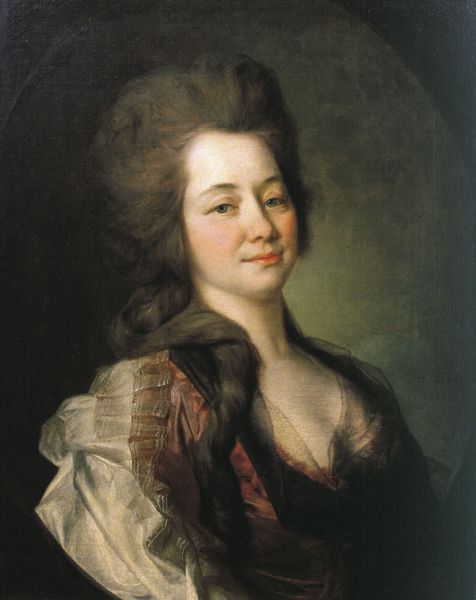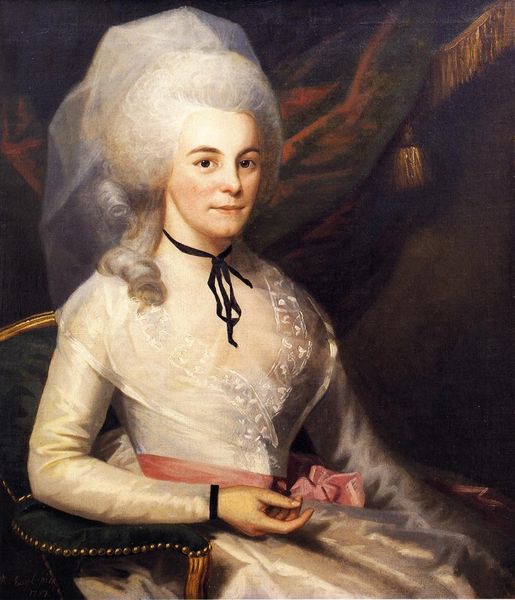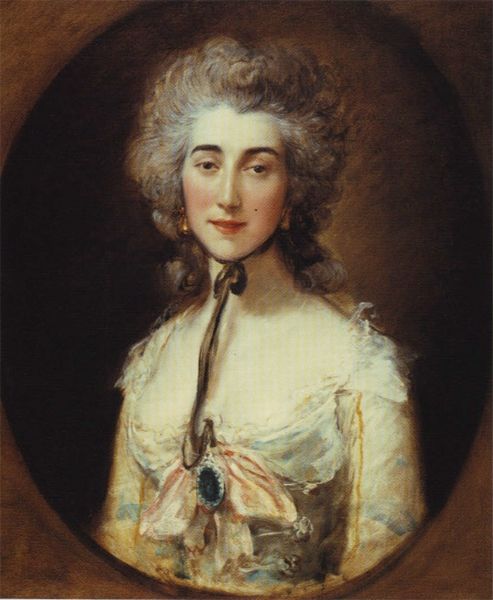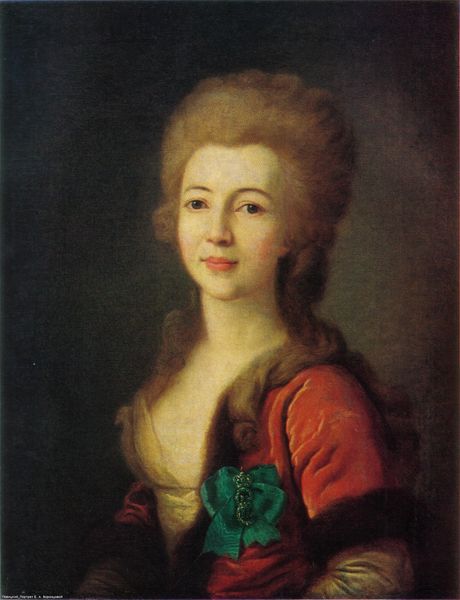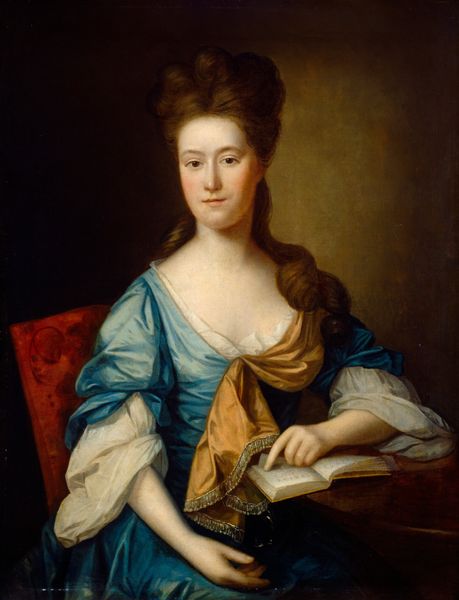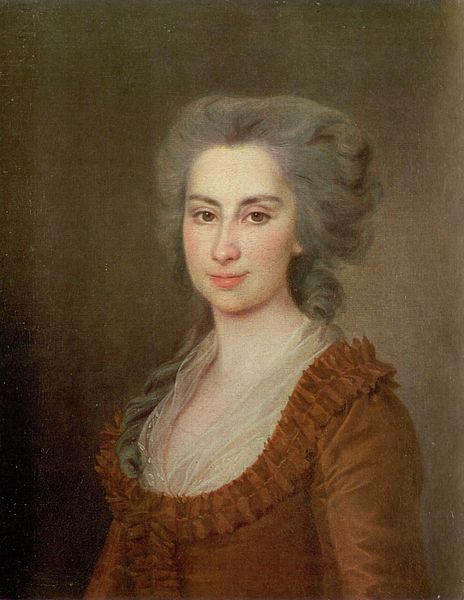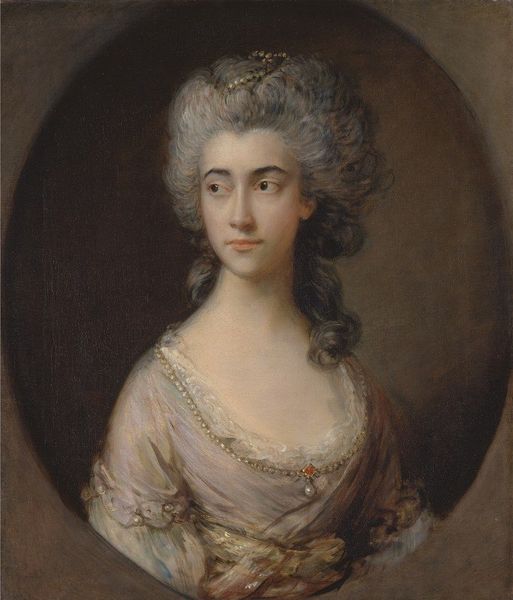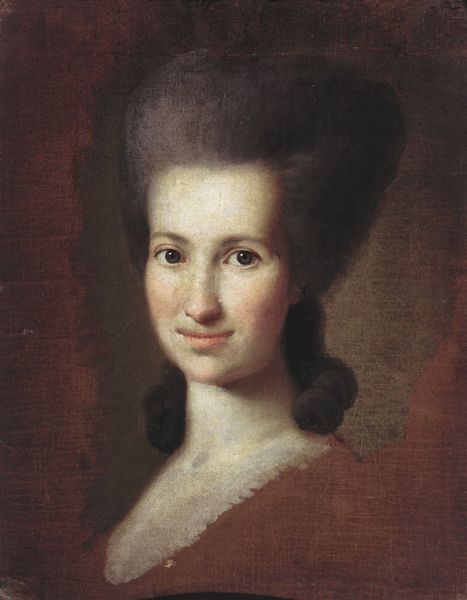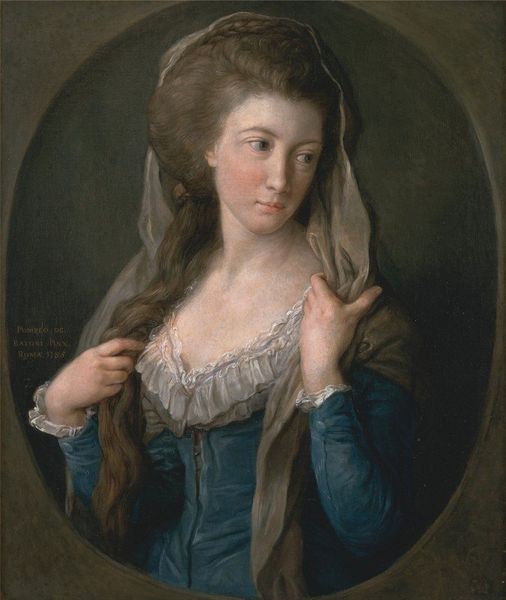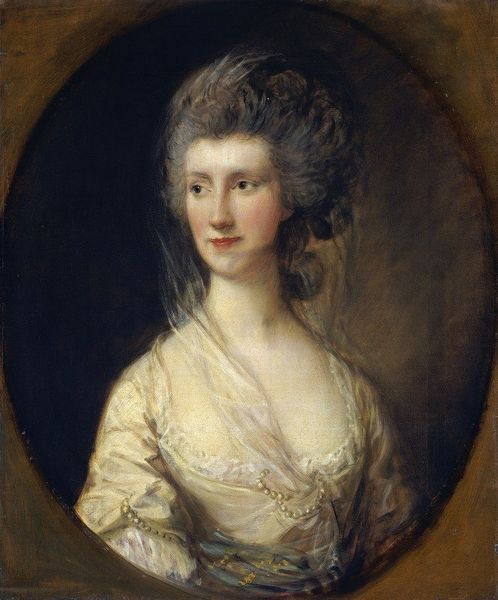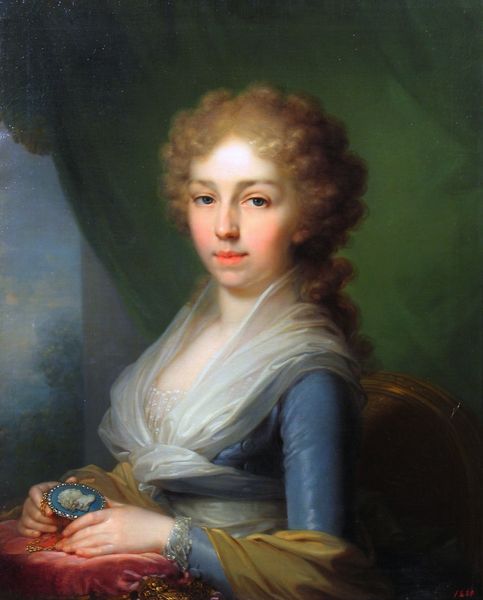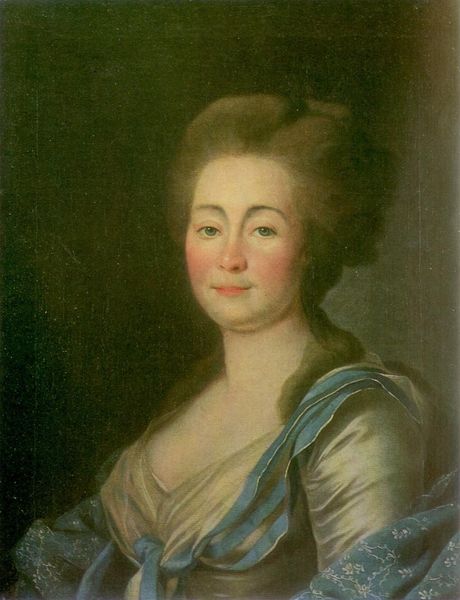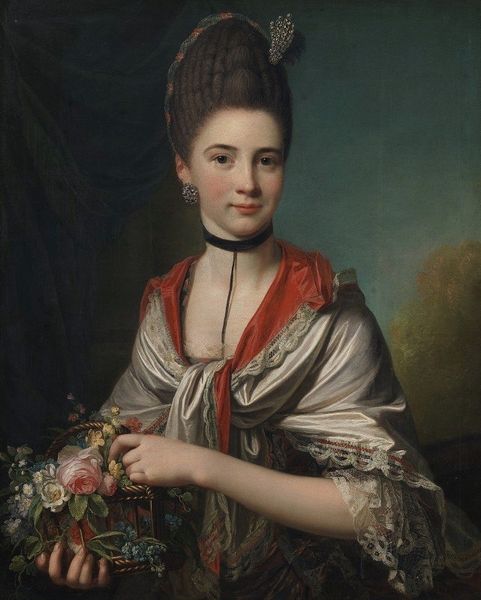
Copyright: Public domain
Curator: Ah, the delicate poise of Charles Willson Peale’s "Mrs. John O’Donnell," painted in 1787. I always find myself lingering with this one. Editor: She feels like a sigh. Everything about her speaks to gentility, a pastel quietness. That soft focus…was Peale experimenting, or just feeling…sentimental? Curator: A bit of both, I suspect. Peale was very much of his era, influenced by both Rococo’s elegance and Romanticism's burgeoning sentimentality. What captures my attention are the layers of identity. Mrs. O'Donnell, Sarah Chew Elliott, was part of Philadelphia's elite. Editor: Absolutely. Her pose, that gauzy dress, even the classical urn in the background are declarations of status. And then there's the miniature she's holding. Who is it, and what does it signify in terms of patriarchal bonds, ownership? Is it a love token, or a symbol of familial duty? Curator: A tantalizing mystery, isn't it? While its certain representation is still to be deciphered, it provides insights into elite marital life. I see her less as a passive subject and more as consciously constructing her image—as she wants to be seen. The very pale skin too... was a common fashion during that period. I cannot help but think of colorism! Editor: Colorism in a young republic trying to break with its monarchial past... Portraiture served very concrete functions. Perhaps a record for the sitter's relatives to reflect on future ancestral identity. Mrs. O'Donnell holding this miniature feels more like a carefully crafted statement about lineage and legacy than a spontaneous, intimate gesture. Curator: You make a powerful point. There's so much calculation behind perceived ease and beauty. In our own ways, haven't we all sought the means and images by which to claim our legacy? I really feel like this is what the subject and Charles Willson Peale have in common: the search and portrayal of human presence. Editor: That's why portraiture never gets old; we’re always implicated, as viewers, in that search. Thank you, it’s been insightful to re-frame Mrs. O’Donnell today.
Comments
No comments
Be the first to comment and join the conversation on the ultimate creative platform.

